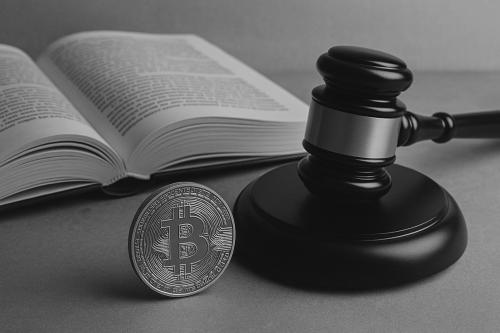Connecting the anti-corruption and human rights agendas: challenges and opportunities for Collective Action

In 2020, the Basel Institute on Governance with the support of the Siemens Integrity Initiative launched a series of roundtable discussions that brought companies together to analyse the potential nexus between corporate efforts to protect human rights and prevent corruption.
While bribery has been a prohibited practice under the laws of a majority of countries for over 20 years, and in many places corporate criminal liability for corruption has also been introduced, the corporate responsibility to protect human rights has largely been addressed through soft law instruments up until recently. As we mark the 10th anniversary of the UN Guiding Principles on Business and Human Rights, this situation however is changing.
From soft law towards mandatory regulations
On the one hand, there are strong regulatory expectations on companies to implement effective compliance programmes to address bribery laws.
On the other hand, the pressure on companies to take action around the topic of human rights is increasing as, similar to the field of bribery 20 years ago, the regulatory landscape is shifting away from soft law towards mandatory human rights due diligence regulations.
As companies in almost all industry sectors continue to be challenged when it comes to addressing the jigsaw of varying international and national standards, this presents opportunities for companies to meet the expectations of stakeholders on an increasingly level regulatory playing field.
Exploring a collaborative approach through Collective Action
Drawing on our long experience in anti-corruption Collective Action, we reached out to private-sector partners to gather their views on the potential of exploring synergies between anti-corruption compliance and the business human rights agenda to address this challenge. A collaborative approach has also been recommended by the 2020 guide Connecting the anti-corruption and human rights agendas: A guide for business and employers’ organisations by Business at OECD (BIAC) and the International Organisation of Employers (IOE).
More than 50 companies responded to our outreach on the synergies between business human rights and anti-corruption. We met with each company on a bilateral basis at first, in order to understand the interest of each company for this specific topic, and also to assess the level of maturity of each company’s approach to addressing human rights and anti-corruption topics. Based on the sectors, but also common interests and challenges identified by each company, we then divided the 50 companies into five groups which met twice over a period of six months.
The aim of the roundtable discussions was to identify opportunities to leverage anti-corruption best practices which could potentially support human rights and synergies between the two efforts, and also the limits.
Challenges in connecting the business and human rights and the anti-corruption agendas
Most companies noted the presence of internal silos between compliance functions that are responsible for anti-corruption on the one hand, and the sustainability/corporate social responsibility (CSR) functions that have traditionally managed the topic of human rights. Breaking down these silos and fostering constructive exchanges was one of the first recommendations resulting from this consultation.
Several other challenges emerged during both the bilateral calls and the roundtable discussions:
Fast-changing stakeholder expectations
Companies confirmed the above-described marked increase in focus on business human rights from regulators, but also noted the rapidly growing interest from other key stakeholders, including clients, public lenders and investors.
They pointed out that a particular challenge was the speed at which the expectations of these stakeholders are shifting, something that was reported to be particularly noticeable in certain European countries and North America.
Differing levels of maturity and understanding
Given the relatively recent uptake in human rights discussions both at the international and local levels, the maturity of companies with regards to their understanding and integration of the human rights agenda into their risk mitigation strategies and compliance management systems varies widely.
Heavily regulated industries and industries that have faced high-profile human rights-related scandals in recent years are, in general, more likely to have undertaken efforts to understand business human rights-related topics within their sector. It is interesting to note that these same sectors also appear to have the strongest understanding of corruption prevention.
Assessing human rights risks
Human rights risk is seen as a challenge for a great majority of companies. This mainly arises from the divide between risk to business, in the traditional compliance interpretation of risk assessment, and risk to people in the human rights interpretation of a risk assessment.
The limited in-house expertise on human rights was also noted as a challenge in order to identify salient human rights risks across the supply chain.
Bridging the silos of compliance and sustainability
The definition of a governance structure which adequately takes into account human rights is an ongoing challenge which takes several forms. A siloed approach that integrates human rights in the CSR or sustainability function seems to prevail. This is largely for historical reasons relating to the debates around standalone reporting on CSR topics and more recently environmental, social and governance (ESG) reports.
Many companies noted that this typically leads to limited (or non-existent) exchanges of information between the anti-corruption compliance functions and the guardians of CSR.
Some companies nowadays do have a dedicated human rights function. However also in these set-ups, internal buy-in (and coordination with other relevant functions, such as anti-corruption compliance) is perceived as a major obstacle.
In other companies, ownership of the human rights risk is unclear and does not have board attention, let alone any form of oversight.
Implementing policies – a need for tone from the top
On the upside, most companies have already defined – or are in the process of finalising – policies on human rights, either as a standalone statement or integrated into a broader policy document. Where companies have had such policies for some time, they are also engaged in reviewing these to ensure alignment with new legal and regulatory developments.
However, a common thread is that there is a lack of support from the top leadership of the companies for substantiating the implementation of such policies with appropriate procedures and processes. This in turn affects access to resources.
Supporting the supply chain
Some companies also noted a more general lack of understanding from suppliers and third parties as to what human rights questionnaires and requirements would mean in practice for their business relationship. The use of contractual agreements mentioning human rights was seen as a first step, but companies noted challenges in going further down the supply chain and having a greater positive impact.
In order to overcome this, some companies focus on outreach and on capacity building: they help their contractors produce policies, develop whistleblowing mechanisms and roll out training programmes.
A complementary approach that acknowledges specificities
While a majority of participating companies identified potential synergies between the human rights agenda and anti-corruption compliance, it was also generally acknowledged that human rights and corruption are two distinct topics. In other words, they should not (and cannot) be completely merged. Rather, they need to be seen as an overarching compliance and risk topic and thus embedded into risk management processes, but also treated discretely when necessary.
Subject matter expertise can help enhance and leverage current practices, with an emphasis on coordination of such expertise when looking at due diligence with a corruption and human rights lens.
Taking the next steps together: Collective Action
Collaborative approaches to the joint agendas of human rights and anti-corruption could also lead to self-regulation within these dual agendas in certain industry sectors. As mentioned in a September 2021 paper issued by the IOE, BIAC and Business Europe:
“Business and their representative organisations must be part of the solution and not perceived as the problem and must be fully involved in the development of normative and non-normative processes. Peer-learning and the exchange of experience are key to support each other in the implementation of the UN Guiding Principles.”
This opens a window of opportunity for Collective Action between industry players, peer companies and other stakeholders. The aim is to level the playing field with meaningful and coherent anti-corruption and human rights approaches that will support transparency, ethical decision making and engaged leadership. Pushing the human rights and anti-corruption agenda forward in any business requires a strong corporate culture focusing on integrity.
The roundtable members will be invited to take the discussions to the next level through a second round of bilateral meetings as well as targeted roundtable discussions. We will also conduct further research on the nexus between human rights and corruption, engaging multiple stakeholders throughout the process and in the development of an analysis report.




